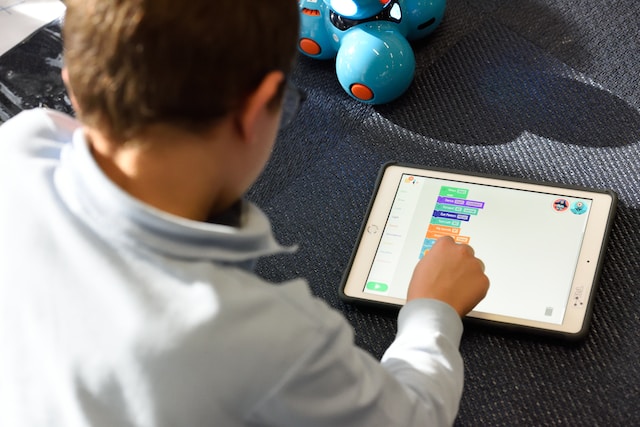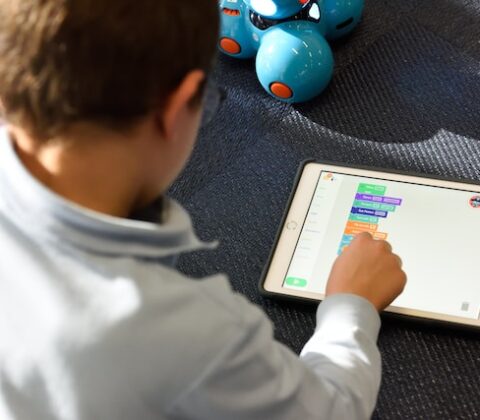

Different Types of Math Classes
Math is one subject that most students equally dread and love. While some find it easy and enjoy it, others find it challenging and struggle to keep up.
Different Types of Math Classes: Which One is Right for You?
However, regardless of where you stand on the math spectrum, attending math classes can help you sharpen your skills and boost your confidence. In this blog, we will explore some of the different types of math classes that you may encounter in your academic journey and help you determine which one could be the right fit for you.
- Basic Math Classes: These classes are designed for beginners and cover basic math concepts such as addition, subtraction, multiplication, and division. Basic math classes are suitable for both high school and college-level students who need to improve their arithmetic skills. If you’re having difficulty with these core concepts, basic math classes could be the perfect fit for you.
- Algebra Classes: Algebra is a more advanced form of mathematics that deals with equations, variables, and unknowns. Algebra classes will explore topics such as linear equations, inequalities, and quadratic equations. These classes are suitable for high school and college-level students who have already mastered basic math concepts. If you’re considering pursuing a degree in a field such as engineering, physics, or computer science, then algebra classes are a must.
- Geometry Classes: Geometry deals with the study of shapes and their properties. Some of the topics covered in geometry classes include angles, lines, and circles. Geometry can be challenging for some students due to its visual nature, but it’s an essential skill for students who want to pursue careers in fields such as architecture, surveying, and design.
- Calculus Classes: Calculus is a highly advanced form of math that deals with functions, limits, derivatives, and integrals. Calculus classes are suitable for college-level students who are pursuing majors in fields such as math, science, engineering, and economics. If you wish to pursue a career in any of these fields, then calculus classes are a must.
- Statistics Classes: Statistics is the practice of collecting, analyzing, and interpreting data. Statistics classes explore concepts such as probability, hypothesis testing, and regression analysis. Statistics classes are suitable for college-level students who are pursuing degrees in fields such as business, social sciences, and healthcare. If you plan on working with data, then statistics classes are a must.
Different types of math classes cater to different levels of learners and skills. Whether you are a beginner or an advanced student, you can find a math class that is right for you. Basic math is the foundation of other math subjects, so starting with it helps build a strong foundation. As you progress, you can gradually move to more advanced classes such as algebra, calculus, and statistics. The key is to find a class that challenges you without overwhelming you, and with the right mindset, you can excel in math.
Different Types of Math Classes
Whether teens plan to pursue college, trade school or employment after graduation, a strong foundation in math will help them get ahead. That’s why they should take a variety of math classes.
While the curriculum may vary by school district and state, most teens take Algebra 1, Geometry, Pre-Calculus and Calculus. These are the classes most colleges expect applicants to have taken.
Algebra
Algebra is a major component of math that is used to unify mathematical concepts. It models real-world situations and uses symbols to represent entities and relations. Algebra builds on experience with numbers and operations, geometry, and data analysis. This makes it important for those who want to pursue careers in sciences, medicine, computer modeling, and engineering. It also provides the foundation for more advanced studies in areas like statistics and data analysis, control theory, and geometric modeling.
Some people describe algebra as a language that helps us express math relationships by using letters to stand for different quantities. It is built on basic arithmetic, including addition (+), subtraction (-), multiplication (x), and division. However, in algebra, unlike arithmetic, the numbers are not fixed but can be replaced by letters such as x, y, and z. A formula in algebra is an expression that consists of an equation with equals signs, variable terms separated by commas or parentheses, and constants, such as 5x + 6y. The expression may be simplified through the use of the order of operations formula, PEMDAS, which stands for plus (x), equals (y), multiplication (x), and division (/).
The term algebra can be applied to several different mathematical fields, such as elementary algebra, which includes the traditional topics taught in a modern elementary school mathematics course, linear algebra, and abstract algebra. The latter refers to the study of algebraic structures, such as groups, rings, and vector spaces. It can also refer to the specific mathematical number systems of scalar multiplication and commutative algebras.
In everyday life, we encounter algebraic calculations, such as figuring out the distance between two points and determining how much to pay for something based on its price. Algebraic formulas are also important for calculating income and spending, estimating credit card interest rates, and predicting the future value of money.
Algebra also plays an important role in the learning process, helping kids develop critical thinking skills and pattern recognition. In addition, kids learn spatial intelligence while playing algebra-related games, which will prove helpful in their future lives.
Geometry
Geometry is a branch of math that studies shapes, angles and dimensions. It’s one of the oldest branches of mathematics, along with arithmetic, and is used to understand spatial relationships in the world around us. Students who enjoy geometry typically go on to take advanced math classes like Algebra and Trigonometry.
Many schools offer courses that combine geometry, algebra and advanced arithmetic into one class. These courses are sometimes referred to as eighth grade math or pre-algebra, and they usually cover topics ranging from number sense and operations, fractions, decimals, linear equations and functions, complex numbers and polynomials, and graphing functions. The classes are usually taught by a single teacher or team of teachers, which can make it easier for students to get a good grasp of the material.
Geometry covers two-dimensional flat shapes such as lines, triangles and circles and three-dimensional objects such as cubes, prisms, cylinders and spheres. It’s important for students to learn how to draw these shapes correctly and understand their properties, says Thinkster Math founder Raj Valli. Geometry also teaches students how to solve problems using deductive reasoning and understanding transformations and symmetry.
Most students who take geometry do so after completing Algebra 1, which is generally taught in eighth grade. Students can be placed into this class based on the results of a placement test at the end of their eighth grade year or on their performance in other general math classes in seventh grade. Some school districts follow a different sequence for their curriculum, which can result in students taking geometry as a freshman instead of Algebra I.
There are several types of geometry, but the most common is Euclidean geometry. This type of geometry was developed by the Greek mathematician Euclid around 300 bce. It was based on 10 axioms or postulates, and from them, several hundred theorems were proved by deductive logic. Other forms of geometry include analytic geometry, projective geometry and differential geometry.
Trigonometry
Trigonometry is a branch of math that focuses on relationships between the sides and angles of triangles. It uses the ratios of sine, cosine, tangent, and secant to calculate the sides and angles of a triangle using its hypotenuse (the longest side) and radius (the smallest side).
While geometry is used in many different careers and professions, trigonometry is most widely used in aviation, construction, and astronomy. It’s often taught in high school prior to precalculus, which is an advanced class that builds on the concepts learned in algebra and geometry.
One of the main reasons why trigonometry is so useful is because it allows us to find angles and distances without actually measuring them. For example, if you are standing far away from a tree and want to know how tall it is, you can use trigonometry to figure it out without ever having to walk up to the base of it. This is possible because of the relationships between the sides and angles of a triangle, as well as the Pythagorean Theorem (the lengths of the three sides of a right-angled triangle are equal to each other).
Trigonometric functions like sine, cosine, tangent, cotangent, and secant can be difficult to memorize. Fortunately, students can practice these functions on calculators and also use mnemonics to remember them. The mnemonics are ways to create words or phrases that represent the angles and ratios of a right-angled triangle’s sides, such as “SOH-CAH-TOA” for the sine function.
Another big use for trigonometry is to calculate distances in a variety of fields. Oceanography, seismology, meteorology, physical sciences, acoustics, and navigation are just a few of the fields that rely on this type of math. For instance, trigonometry can be used to determine the height of a mountain or tower by finding its distance from the shore.
While the topic of trigonometry might seem intimidating, it’s important to remember that knowing this subject will help in any career or field that deals with angles. The best way to learn it is with a tutor. Whether online or in person, a tutor can help students feel confident about the new concepts they are learning and provide immediate feedback.
Pre-Calculus
In pre-calculus, students get to use all the skills they have acquired through algebra I, geometry, and trigonometry. While this class is not required for students, many opt to take it to prepare themselves for college math and other higher level courses such as calculus.
It is also the final step in a sequence of math classes that will eventually lead to a student earning college credit for their high school degree. Students can enroll in AP Precalculus to fulfill the math requirements for a number of colleges and universities.
A standard AP precalculus course is similar to a trigonometry course but has more focus on math analysis. In addition to learning about the standard trig functions like sine and cosine, a typical AP precalculus course covers polynomial, rational, and exponential functions and limits, as well as binomial and Euclidean vector operations.
Graphs are also important in pre-calculus, which is the first time that students will be expected to analyze and solve mathematical equations through the use of graphs. As a result, students will be exposed to many new equations and will likely need a lot of practice with how to best represent them in a graph.
Another topic that is often included in a pre-calculus course is the concept of limits and continuity. This is the process of determining the range or domain of a function by looking at its graph. Students will learn how to identify key features of a function such as intercepts, symmetry, and asymptotes.
Other topics covered in a typical pre-calculus course include complex numbers, and matrices and systems of equations. Students will be introduced to how to model and analyze real-world data through the use of these tools, which can then help them in a variety of fields and careers.
Depending on their career path, some students will benefit from a more advanced version of this course called AP Calculus AB or AB. While both pre-calculus and calculus are used in a wide range of fields, the two courses differ in terms of their problem-solving approaches as well as how they approach modeling real-world data.
Comments are Disabled